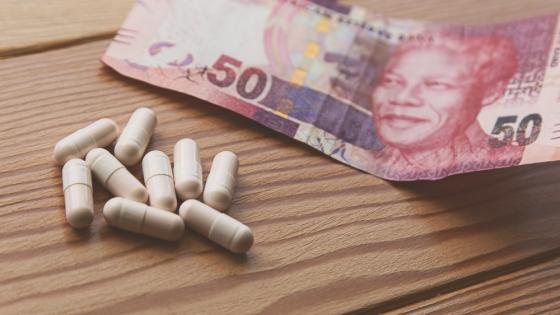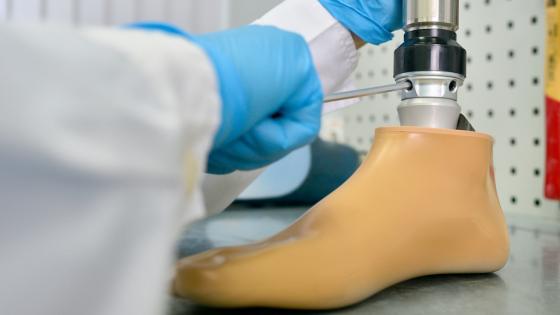Across low- and middle-income countries, the prices of essential medicines, such as cancer treatments, HIV antiretrovirals, and antibiotics, display substantial variations, with the locally observed prices sometimes being many times higher than the lowest international reference level for generic equivalents. Chalkidou et al. (2020) show that some purchasers in low- and middle-income countries pay up to 30 times the minimum international reference price for basic generic medicines, such as paracetamol, insulin, and omeprazole. High prices, in turn, deplete already-limited public health budgets and generate shortfalls in access, especially for the poorest and neediest members of society.
Existing economic research has addressed the issue of affordable access to drugs in developing countries mostly from a patent protection angle. Several authors have analysed the trade-off between the potential costs of restrictive patent policies (due to the higher prices resulting from monopolistic pricing policies) and the potential benefits related to the faster diffusion of new drugs to markets enjoying stronger patent protection (Chaudhuri et al. 2006, Kyle and Qian 2014, Cockburn et al. 2016).
However, most spending on health products in these countries goes to off-patent branded generics, for which patents cannot explain the large markups being charged. Instead, important potential sources of friction in local drug markets are likely to involve suppliers' market power and buyers' size, as well as the type of procurement mechanisms used by public buyers. Understanding price variations and formulating policy recommendations for better and cheaper access to drugs in developing countries requires analysing the market structure for drug procurement.
In a new paper (Dubois et al. forthcoming), we analyse the impact of procurement mechanisms and supply-side concentration on drug purchase prices in low- and middle-income countries. These countries use a variety of procurement mechanisms including centralised public procurement with or without central medical stores, decentralised public procurement, and private procurement. One key mechanism that has been used to attempt to reduce unit purchase prices (which impact we test in this paper) is ‘pooled procurement’, whereby several buyers – either institutions in a single country or health agencies across countries – consolidate their purchases.
First, we develop a model in which several firms offer differentiated products through a procurement process that can be either centralised or decentralised. We assume that public buyers are price-takers when buying in a decentralised manner (an appropriate assumption in the context of drug procurement in low- and middle-income countries), but become non-price-takers when procurement is centralised (i.e. when they are able to get together to bargain with suppliers). Under fairly general assumptions, we show that prices under centralised procurement are lower than prices under decentralised procurement.
We then use data from seven low- and middle-income countries with diverse drug procurement systems to evaluate empirically which procurement mechanisms allow countries to access drugs at lower prices. Specifically, we use data from IMS Health (IQVIA) that exhaustively cover the sales quantities and expenditures of drugs for 40 essential molecules across 16 therapeutic areas at a finely disaggregated level (by year and sector of purchase during the period 2015-2017). Previous studies relied on limited sets of drugs with specific characteristics, mostly those targeting infectious diseases such as HIV/AIDS, tuberculosis and Malaria – diseases which are at the centre of attention for global health advocates and dedicated international organisations. This narrow scope limits the external validity of their findings. Instead, we consider a much larger variety of drug classes, also including, for example, antibiotics, antihypertensives, and contraceptives. Generic availability is the case for 33 out of these 40 molecules (over 95% of the observations in our sample).
The countries included in our analysis are India (in particular, Kerala), the Philippines, Senegal, Serbia, South Africa (a subset of three States: KwaZulu-Natal, North West, and Eastern Cape), Tunisia, and Zambia. There is rich variation in terms of the way drugs are procured, both across and within these countries. For three of the countries in our sample (the Philippines, Serbia, and South Africa), the channels of drug procurement even vary within specific therapeutic areas. For example, specific HIV antiretrovirals are purchased centrally, while others are purchased in a decentralised manner. We also observe different purchase mechanisms being used simultaneously within molecules. This is seen mostly in public and private procurement, but also in public centralised and decentralised procurement, in some cases.
Our empirical strategy relies on exploiting this within-molecule country-year variation. The identification is possible because, for a subset of molecules in some countries, purchases are made simultaneously through the different channels (public centralised, public decentralised, and private). There might also be within-molecule country-year differences in prices at the product-level, because there are often several manufacturers offering different brands of the same generic molecule. This could drive differences in prices through quality or if centralised procurement was targeting specific and cheaper formulations. We address these concerns by adding product fixed effects. Finally, we use a selection correlation procedure to address the concern that there might be a systematic bias in the choice of procurement mechanisms and, in particular, of which molecules are procured centrally.
In addition, the concentration of suppliers also varies substantially across countries and therapeutic areas, from single seller situations to highly competitive environments. We estimate the role of suppliers' concentration by interacting the purchase mechanisms with within-therapeutic areas’ ‘Herfindahl-Hirschman Indexes’, which we instrument following classic methods in the industrial organisation research.
Consistent with the model's predictions, our main finding is that centralised procurement of drugs allows the public sector to obtain much lower prices. In our most stringent specification, with product fixed effects and selection correction, we find that centralised public procurement commands a 15% price reduction on average. However, we also find that the reduction is smaller when the supply side is more concentrated. At the extreme, instrumenting the supply side concentration, we show that the price difference vanishes when public buyers face a supplier market with an Herfindahl-Hirschman Index value above 46% (which is approximately the 80th percentile of the distribution).
The price reductions found in this paper may be driven by two complementary mechanisms. First, demand-side concentration may enhance public buyers' bargaining power, allowing them to extract lower prices (all else being equal). In addition, centralised procurers are likely to buy larger quantities, securing price discounts on larger orders in doing so. These two channels are hard to disentangle, as they occur simultaneously. Further research is needed to identify the nature of market interactions between buyers and sellers and to separate their effect from that of transaction size.
Finally, our results have important policy implications regarding supply-side concentration. Indeed, simple reduced-form estimations of the impact of increasing supply-side competition show large potential increases in the quantity of drugs that public sectors could purchase for a given budget.
References
Chaudhuri, S, P K Goldberg and P Jia (2006), “The Effects of Global Patent Protection in Estimating Pharmaceuticals: A Case Study of Quinolones in India”, American Economic Review 96: 1477-1514.
Chalkidou, K, J M Keller, M Over and A Jones (2020), “Can Better Procurement be the Key to Financing UHC? Potential Savings from Health Sector Procurement Reforms in Low- and Middle-Income Countries”, CGD Policy Paper 192, Washington DC.
Cockburn, B I M, J O Lanjouw and M Schankerman (2016), “Patents and the Global Diffusion of New Drugs”, American Economic Review 106 (1): 136-164.
Dubois, P, Y Lefouili and S Straub (forthcoming), “Pooled Procurement of Drugs in Low and Middle Income Countries”, European Economic Review.
Kyle, M and Y Qian (2014), “Intellectual Property Rights and Access to Innovation: Evidence from TRIPS”, working paper.







